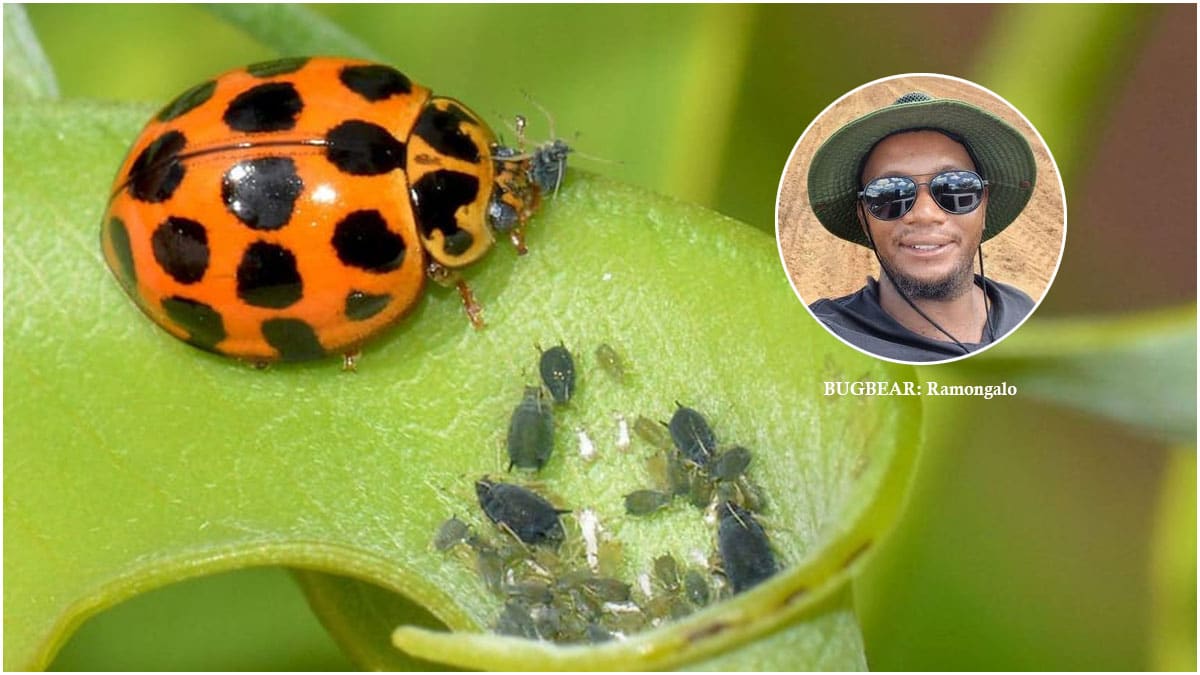Young farmer warns about the use of synthetic pesticides
In the last two decades the use of synthetic pesticides has come under serious scrutiny following studies that suggest they could be harmful to both humans and animals.
A study published in May 2018 warned that agricultural workers exposed to synthetic pesticides are at an increased risk of cancer and neurological disorders.
The Agricultural Health Study (AHS) initiated by North Carolina and Iowa in 1993, similarly found that farmers had higher incidence rates of lip and prostate cancer, B-cell lymphomas, leukemia, thyroid cancer, and testicular cancer.
The authors speculated that the increases in lip cancer may be caused by UV exposure while the excess of thyroid and testicular cancer was likely due to pesticide exposure in this population.
Back home, a young horticultural farmer, Gaolathe Ramongalo believes synthetic pesticides are not only creating health problems for humans, but are a menace to wildlife too.
Ramongalo is convinced the use of these controversial pesticides introduced by the United States in the 1930s is linked to the sudden disappearance of the ladybug.
“When was the last time you saw a lady bug?” Ramongalo asks rhetorically.
“It should be visible in the rainy season; the lady bug is either no more or its numbers have significantly reduced. From my research, this is linked to the use of synthetic pesticides,” insists the young farmer.
A member of Botswana Farmers Association (BOFA), which is registered under Southern African Confederation of Agricultural Unions (SACAU), Ramongalo was recently selected for this year’s Youth Leadership Incubation (YLIP).
Only 20 individuals are chosen across all SADC countries, with two from each nation.
A product of Local Enterprise Authority (LEA) in the Greenhouse Horticulture programme, Ramongalo specialises in tomato farming.
“I’ve been doing this for 12 years and over these years I’ve seen the ladybug changing form and losing its pigmentation and eventually disappearing,” he tells Voice Money.
He is in no doubt the ladybug’s fate is down to the use of cheap synthetic pesticides, preferred by most local farmers to more environmentally-friendly but slightly pricier options.
“Biopesticides are effective and safer means of controlling pests. They have a mild effect on the environment compared to their synthetic counterpart, and are specific in their target, hence preventing bioaccumulation [accumulation of chemicals in an organism that takes place if the rate of intake exceeds the rate of excretion],” he notes.
Ramongalo explains biopesticides don’t chemically kill pests. Instead they will, for example, make a worm stop feeding and eventually die of hunger, or temper with a pest’s reproductive system to stop it from reproducing.
“With synthetics, there’s no way to control the dead pests, and they can be consumed by other animals which were not targeted,” he said.
Ramongalo is especially concerned about the loss of ladybugs, a predator with an insatiable appetite for aphids (tiny soft bodied insects).
“A ladybug can eat up to 5, 000 aphids over its lifetime. They can also help to rid your garden of other soft-bodied insects such as mites, mealy-bugs and leafhoppers, along with insect eggs and even ants.”
The farmer further highlights that unlike synthetics, biopesticides also improve soil quality.
“So the next time we go shopping for our pesticides, keep in mind that you could always kill two birds with one stone by using biopesticides; you will care for our environment as well as have a friend to help you fight aphids,” he concludes. Hopefully, his words don’t come too late for the ladybug!
LADYBUG FUN FACTS
- Ladybugs are also known as lady beetles or ladybird beetles
- They are considered beneficial as they eat other plant-eating insects
- Ladybugs are colorful so they can warn predators not to eat them!
- They are beetles, not bugs!
- Winter doesn’t bother them – they live through it!
- Not all ladybugs look the same! You probably know the red and black ladybug, but there are also yellow, black, pink, orange, and brown ladybugs!
- When ladybugs are scared, they produce a smelly chemical from their leg joints that tastes bad and helps prevent animals and other insects from eating them
- A ladybug can eat 50 aphids a day, and as many as 5,000 aphids in its lifetime
- Ladybugs can live around 2-3 years
- Legend has it that seeing or catching a ladybug is a sign of good luck – providing you let it fly away home of course!






